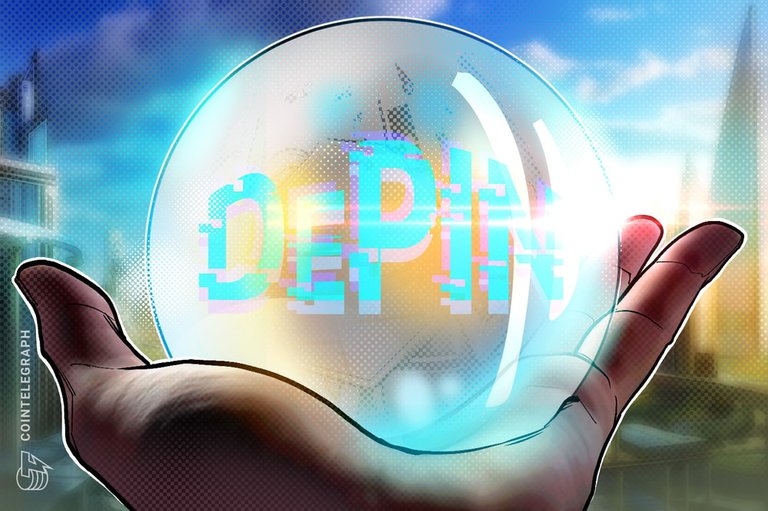Can DePINs replace traditional physical infrastructure companies?
Decentralized physical infrastructure networks (DePINs) have been some of the top growing narratives in crypto developments in recent times and the Solana blockchain has been leading as the #1 chain with highly successful DePIN projects.
For this article, we'll focus on a single project from the ecosystem called Helium.
But before I get into that, what are DePINs?
DePINs (short for Decentralized Physical Infrastructure Networks) are blockchain-based networks that incentivize individuals and communities to build, maintain, and operate physical infrastructure in a decentralized way — without relying on centralized corporations or governments. — ChatGPT
To add a human touch to that definition, DePINs use crypto tokens and smart contracts to coordinate and reward people who contribute real-world services or resources.
The core concept behind DePINs is to tackle the varying frictions that exist with physical infrastructures while also attempting to decentralize the industry, eliminating various flaws of the existing centralized design.
According to data from Coinmarketcap.com, the total market capitalization of DePINs is at $31.6B. That said, the industries making up DePIN verticals or what's called “the addressable markets of DePINs” are valued at $2.2 trillion, according to a Messari report of 2024.
That said, my personal speculation is that DePINs true addressable market is much bigger than the estimates, the reason being that these verticals cut through several major industries that if these physical infrastructures went down, the economies of the world, as of today, would bleed.
But rather than focus on every one of these verticals, we'll look at one to try to understand the probability of DePINs replacing traditional physical infrastructure companies.
That vertical is: Telecom and Wireless networks and the project of focus is Helium.
Telecom and wireless networks, to which the latter is a subset of the former, are critical infrastructures that facilitate global communications via voice, text, video and effectively the internet. Reportedly, this is the largest DePIN vertical by market valuation, estimated to be $2.46T.
When it comes to Telecom DePINs, Helium is the leading name.
Helium primarily incentivizes individuals to contribute to two core services, the Helium IoT network (LoRaWAN) and the Helium Mobile (Cellular).
Helium uses Solana as the coordination and incentivization layer for its DePIN solutions. Certainly, Solana has its flaws, which is mostly its questionable decentralization, however, it is still a high-performance chain, meaning that DePINs on Solana can enjoy cheap fees and high throughput.
Moving on, the Helium IoT network is powered by individual hotspots (IoT devices) using the LoRaWAN protocol for long-range, low‑power IoT connectivity.
The Helium Mobile network on the other hand, also powered by individual hotspots, is focused on offloading carrier traffic.
For clarity, the Helium IoT network provides decentralized wireless connectivity for low-power IoT devices, while Helium Mobile offers decentralized cellular service for smartphones using a community-built 5G network.
The Helium IoT network benefits businesses and developers by providing affordable, long-range connectivity for devices like sensors and trackers, while Helium Mobile benefits consumers by offering low-cost mobile service powered by a decentralized network.
But what does any of these mean? How has Helium performed as a decentralized physical infrastructure network?
The Helium network’s native token, HNT, has a market capitalization of $557 million but it is not the only impressive thing about the DePIN project.
Helium mobile network has over 1.078 million users with 33.56TB of data transferred daily across 100k+ mobile Hotspots and its IoT network has over 276k Hotspots, over 6M messages sent monthly, all whilst saving up 80% in costs.
Certainly, Helium isn't going to magically replace top Telecom companies at this stage, it currently actually has partnerships with carriers like T-Mobile, however, it's still pretty impressive how these networks can employ decentralized incentivization strategies to achieve this level of growth in a critical infrastructure industry as Telecom and wireless connectivity.
So will DePINs replace traditional physical infrastructure companies? What's to be expected is that these solutions will definitely grow to be significant players in the various market verticals. A replacement is probable but partnerships with existing solutions are likely to be very common, although, this will be more of a side-by-side upscaling strategy of the decentralized solutions rather than subjection to the very flawed systems DePINs were set out to improve.
Posted Using INLEO

Helium is the OG DePIN project from which many others drew inspiration.
Similar to Helium, I also think XNET has a lot of potential, as well as DePIN-focused blockchains like IoTeX and Peaq.
I don't see DePIN projects slowing down anytime soon...
It is impressive what Helium has achieved. Haven't looked into XNET yet, but I've looked at projects like Hivemapper, which appears to have an ongoing partnership/integration with Helium.
Hivemapper recently partnered with Lyft, and others - it's a solid DePIN project.
May also want to look into Natix Network.
Once came across the name "NATIX," will have to look into it now.